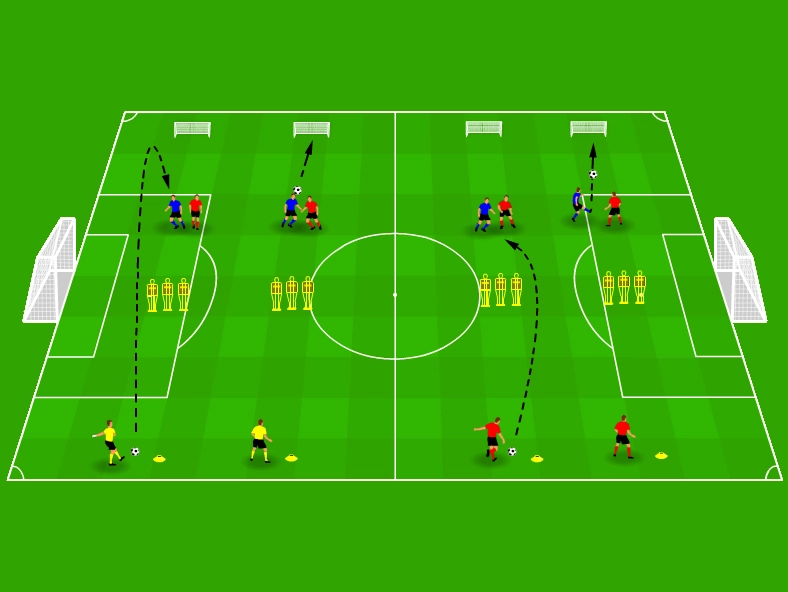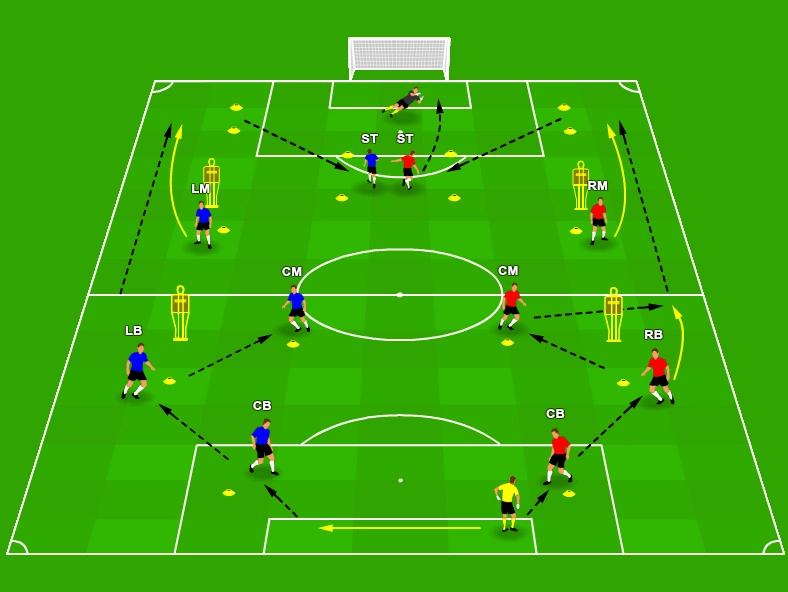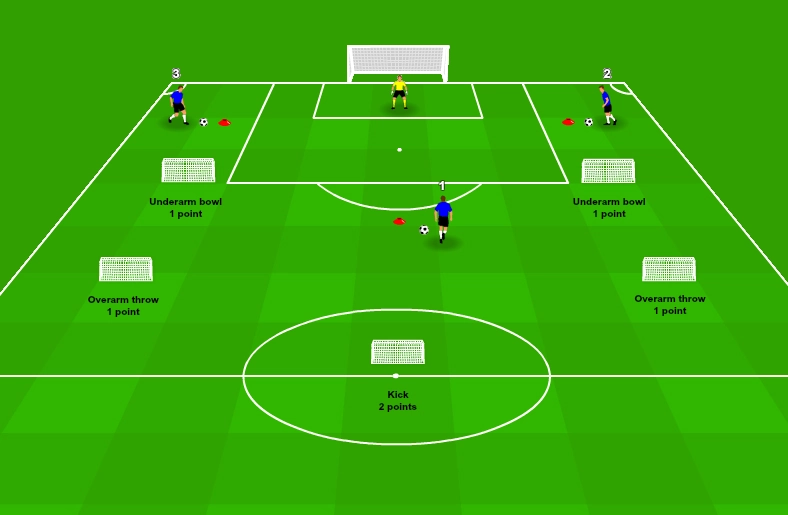Restarting from a Long Goal Kick – Drill

Sometimes the short goal-kick pattern isn’t on. Heavy pitches, man-to-man presses, or the need to change tempo mean you must strike long. This drill gives your keeper, target player, and defender the reps they need to make that option reliable.
Setup
- Players: Minimum 3 (kicker, receiver, defender). Scale up by running simultaneous stations of three.
- Area: 50m channel (half pitch) with mannequins/poles creating a screen the ball must clear. Place a mini goal or full-size goal 20m beyond the landing zone.
- Equipment: Balls, cones for zones, mannequins/poles, and bibs.
Mark three zones: the kicking area, an aerial contest box, and the finishing zone near the goal. Receivers and defenders start inside the contest box facing the goalkeeper.
Instructions
- Goalkeeper (or nominated kicker) drives the ball over the mannequins toward the contest box.
- Receiver attacks the flight, either flicking the ball on first time or cushioning it for a finish.
- Defender competes for the aerial duel but cannot slide tackle.
- If the receiver controls the ball, they have two touches max: one to settle, one to shoot toward the mini goal.
- After five serves, rotate roles so every player experiences the kick, the duel, and the finish.
Scoring ladder
- 3 points: headed/glancing flick that scores directly.
- 2 points: control + finish inside the two-touch limit.
- 1 point: awarded to the kicker every time the receiver scores, encouraging accurate distribution.
Run two full cycles (each player in every role twice). Highest individual total wins; if you have parallel groups, pit winners against each other in a final round.
Variations
- Live striker: Replace the mini goal with an onrushing striker who times their run through a cone gate.
- Time constraint: Receivers must shoot before the ball hits the grass to emphasise aerial prowess.
- Defensive focus: Add a second defender who only challenges second balls to make the box chaotic.
Takeaways
- Distribution quality. Keepers learn to clear obstacles, hit consistent distances, and drop the ball into a controllable window.
- Aerial timing. Receivers rehearse leaps, flicks, and chest control against live pressure.
- Second-ball mentality. Defenders work on boxing out targets, while attackers pounce on scraps near the edge of the box.
- Finishing under duress. Restricting touches makes players sort their feet quickly and strike through bodies.
Mix this drill with your short build-up session so your team can alternate goal-kick options without panic. Share your tweaks on Facebook or tag @footballtechnik on Instagram.



